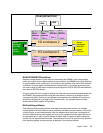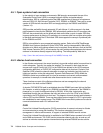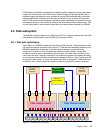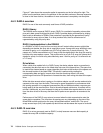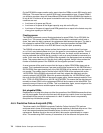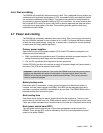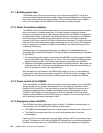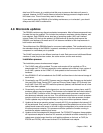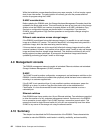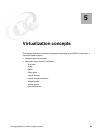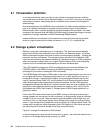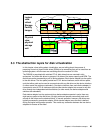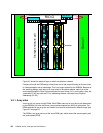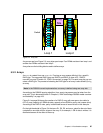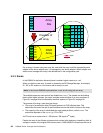Chapter 4. RAS 81
data from NVS memory to a variably sized disk area to preserve that data until power is
restored. However, the EPO switch does not allow this destage process to happen and all
NVS data is lost. This will most likely result in data loss.
If you need to power the DS8000 off for building maintenance, or to relocate it, you should
always use the S-HMC to achieve this.
4.8 Microcode updates
The DS8000 contains many discrete redundant components. Most of these components have
firmware that can be updated. This includes the processor complexes, device adapters, and
host adapters. Each DS8000 server also has an operating system (AIX) and Licensed
Internal Code (LIC) that can be updated. As IBM continues to develop and improve the
DS8000, new releases of firmware and LIC will become available to offer improvements in
both function and reliability.
The architecture of the DS8000 allows for concurrent code updates. This is achieved by using
the redundant design of the DS8000. In general, redundancy is lost for a short period as each
component in a redundant pair is updated.
The S-HMC can hold up to six different versions of code. Each server can hold three different
versions of code (the previous version, the active version, and the next version).
Installation process
The installation process involves several stages.
1. The S-HMC code will be updated. The new code version will be supplied on CD or
downloaded via FTP. This may potentially involve updates to the internal Linux version of
the S-HMC, updates to the S-HMC LIC, and updates to the firmware of the S-HMC
hardware.
2. New DS8000 LIC will be loaded onto the S-HMC and from there to the internal storage of
each server.
3. Occasionally, new PPS and RPC firmware may be released. New firmware can be loaded
into each Rack Power Control (RPC) card and Primary Power Supply (PPS) directly from
the S-HMC. Each RPC and PPS would be quiesced, updated, and resumed one at a time
until all have been updated.
4. Occasionally, new firmware for the hypervisor, service processor, system planar, and I/O
enclosure planars may be released. This firmware can be loaded into each device directly
from the S-HMC. Activation of this firmware may require each processor complex to be
shut down and rebooted, one at a time. This would cause each server on each processor
complex to fail over its logical subsystems to the server on the other processor complex.
Certain updates may not require this step, or it may occur without processor reboots.
5. Updates to the server operating system (currently AIX 5.2) plus updates to the internal LIC
will be performed. Every server in a storage image would be updated one at a time. Each
update would cause each server to fail over its logical subsystems to its partner server on
the other processor complex. This process would also update the firmware running in
each device adapter owned by that server.
6. Updates to the host adapters will be performed. For FICON/FCP adapters, these updates
will impact each adapter for less than 2.5 seconds, and should not affect connectivity. If an
update were to take longer than this, multi-pathing software on the host, or CUIR (for
ESCON and FICON), will be used to direct I/O to a different host adapter.



